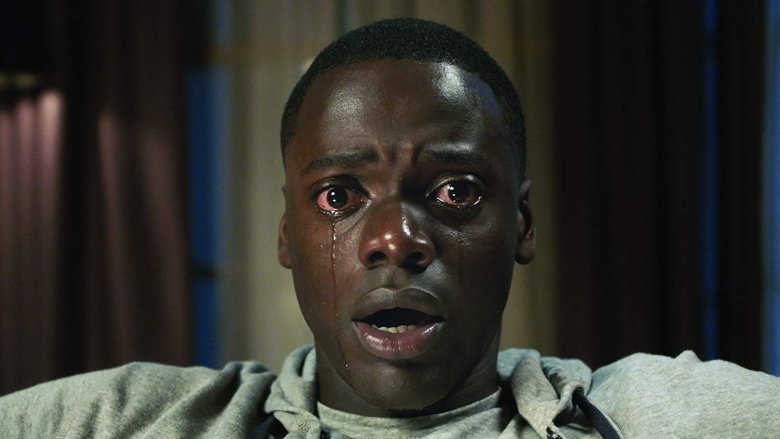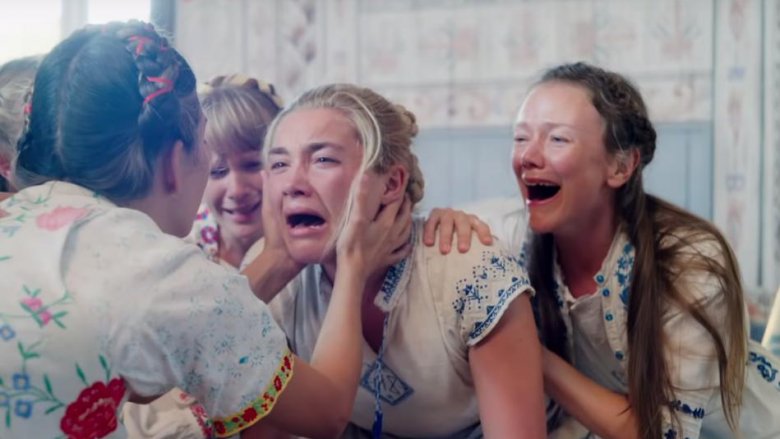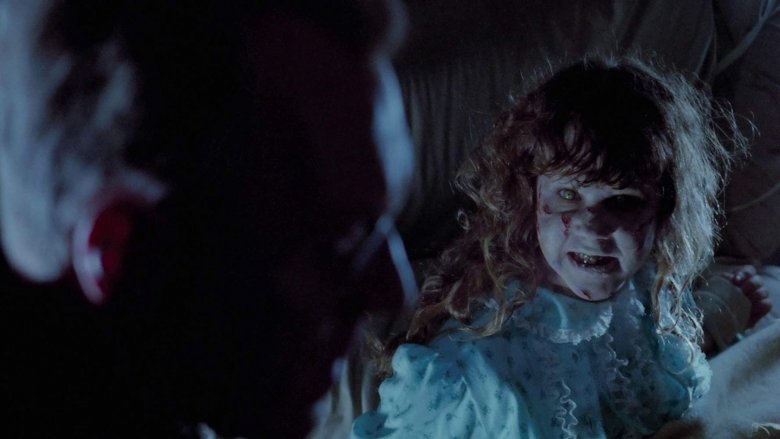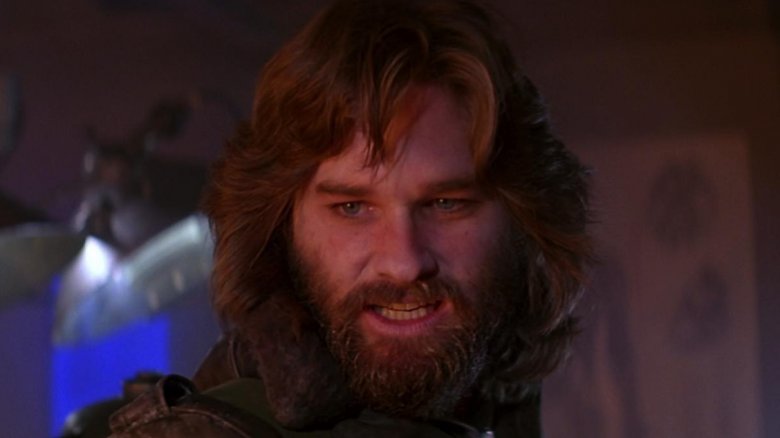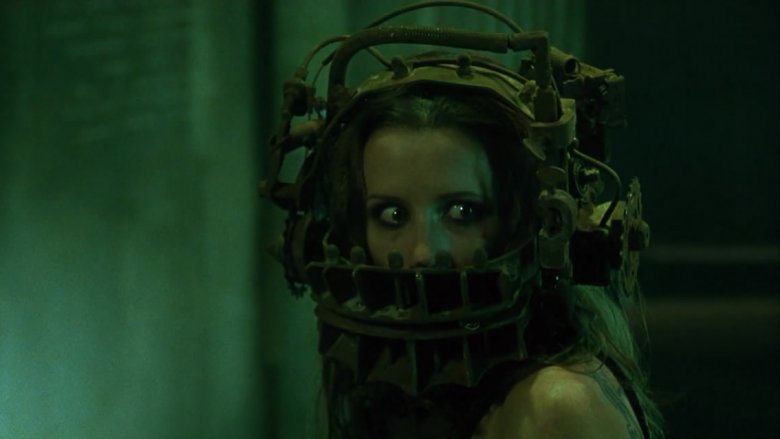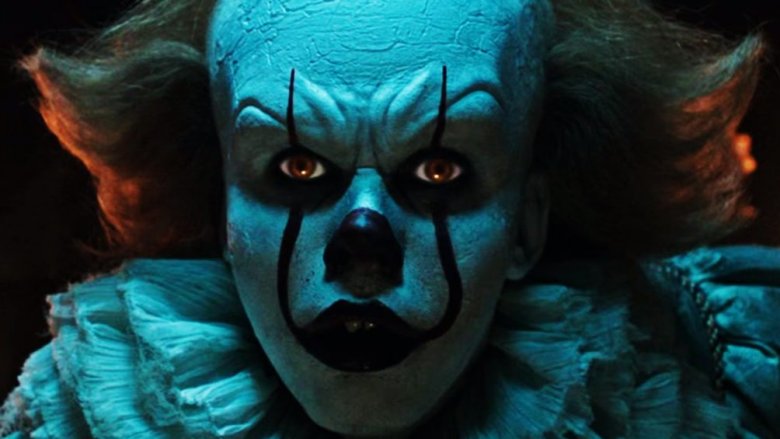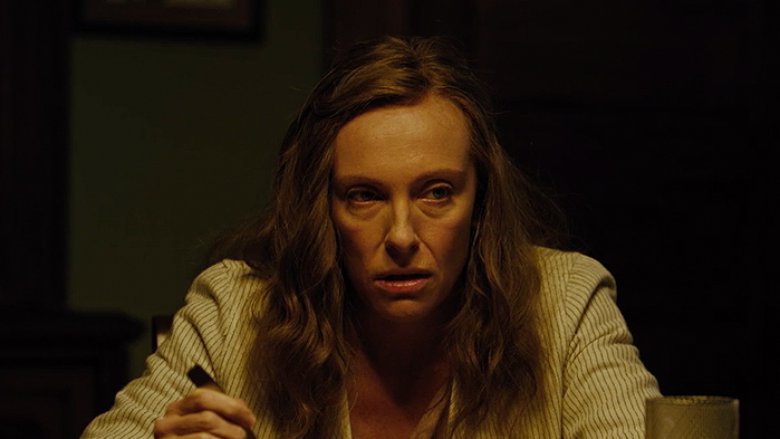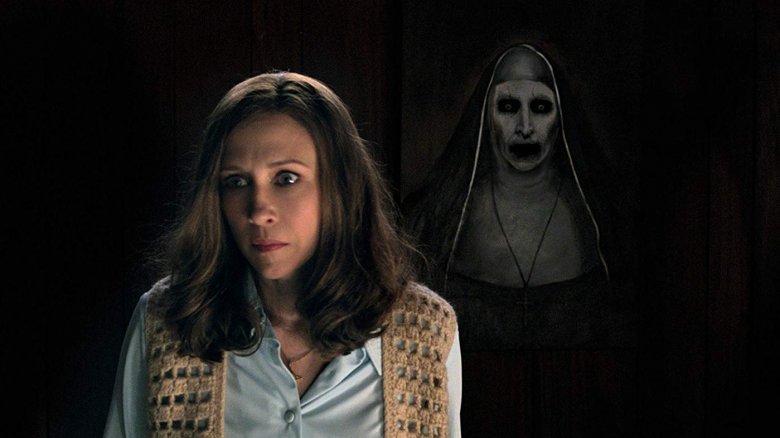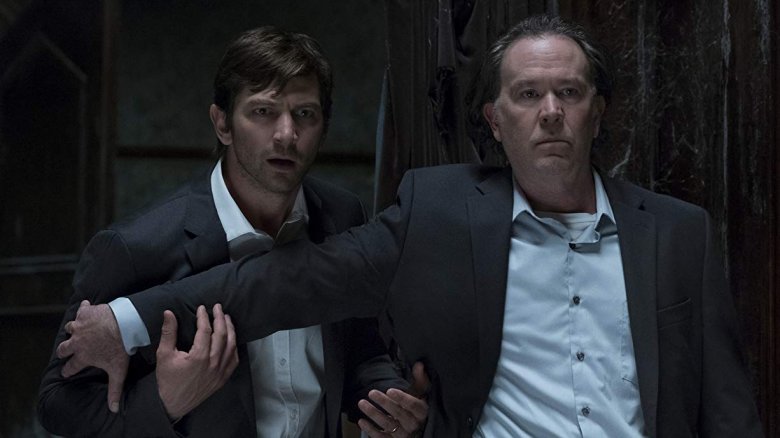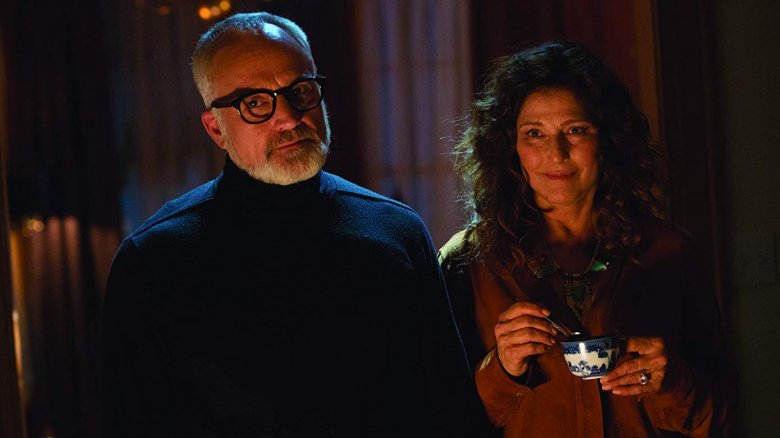The Most Chilling Easter Eggs Found In Horror Movies
Easter eggs can add a whole new layer to a movie, inviting fans to comb through every frame to find hidden details that fly under the radar of the average viewer. Although the phrase "Easter egg" obviously refers to traditional holiday Easter egg hunts, there is some debate about how the term first got applied to hidden references in media.
Video games have their own cornerstone example in the Atari game Adventure, where a clever programmer hid his name in a secret room (a secret that would go on to inspire Ready Player One). Sometimes they're even literal — if you watch carefully in The Rocky Horror Picture Show, you'll find a few Easter eggs left over from a real Easter egg hunt held by the cast and crew. Not every egg was found, so a few made it into the film!
Horror is an extremely ripe genre for Easter eggs — after all, it's undeniably eerie to discover something hiding in plain sight within a good scary story. Sometimes, horror Easter eggs are just fun little references, but they can sometimes add to the film and make it even spookier than you originally realized. Here are a few of the most chilling Easter eggs ever discovered in your favorite horror movies.
Midsommar's hidden background faces
It didn't take horror hounds long to find secret symbolism and hidden details in the scariest movie of 2019. Like the best folk horror, Midsommar finds its characters gradually realizing that something is very wrong in the seemingly idyllic setting of the film, as Dani and her friends try to discover clues to keep themselves alive. Their judgment is often clouded; not only are they constantly doing drugs, but they're also haunted by past decisions that led them to this point. For sharp-eyed viewers, that haunting is very literal.
Dani is haunted by the memory of her sister's suicide, and she is never able to escape her trauma. In a scene near the end of the film, when Dani is being carried to a celebratory dinner on a pedestal, you can spot her dead sister's face in the background, hidden among the trees. Even a trip to Sweden and ritualistic murder can't help her escape her trauma.
According to Digital Spy, this isn't even the only instance of this hidden face in Midsommar. Watch it in slo-mo and see if you can find some more.
The subliminal demon faces all over The Exorcist
1973's The Exorcist is considered by many to be one of the finest horror films ever made — to this day, it is still held up as a timeless horror masterpiece. Though some of the scares and effects may not have the punch they once did (particularly after decades of parody and imitation), The Exorcist does an excellent job of deeply unsettling the viewer. Director William Friedkin added all sorts of subliminal sounds and images to the final cut of the film to help keep the audience ill at ease.
Speaking with Entertainment Weekly, Friedkin discussed layering sounds deep into the film's mix, like heavy machinery and the buzzing of bees, because they trigger our unconscious fight-or-flight mechanisms. He also inserted incredibly quick cuts of a frightening face into a few scenes — too fast for the naked eye, but enough for your brain registered that something is wrong.
Exorcist fansite Captain Howdy has a breakdown of all the places you can see the face in the various cuts of the film. It looks... less impressive in a still screencap, but it's easy to see how it would subconsciously freak people out.
The Norwegians warn us about The Thing in the very first scene
John Carpenter's The Thing features some impressive practical creature effects and a slow burn plot that still has people questioning the ending. This '80s cult classic stars Kurt Russell, being as Kurt Russell as possible while fighting a shapeshifting alien on an Antarctic base. It's as awesome as it sounds.
The thrills of the movie come from the dwindling science team trying to determine which (if any) of them are the alien creature, which can perfectly mimic anything it touches. What you might not realize is that the whole team could have avoided their predicament if any of them spoke Norwegian.
At the beginning of the film, the team sees a dog running towards them and some people firing at it. A man is shouting, but he is speaking another language. According to some translations, the man is pointing at the dog and shouting, "Get the hell outta there. That's not a dog, it's some sort of thing! It's imitating a dog, it isn't real! Get away, you idiots!"
They probably wouldn't have believed him anyway, but it is a bit chilling to know the plot was all laid out right there in the film's opening minutes.
Saw's shocking twist ending is revealed earlier than you realize
The original Saw film shocked audiences and the box office alike — the gritty indie horror flick made back almost almost 100 times its $1.2 million budget and launched a franchise that's still going strong today. The reveal of the Jigsaw killer's identity was also quite a shocker, but eagle-eyed fans (and characters in the movie) could have figured it out much sooner if they had noticed a blink-and-you'll-miss-it detail.
Fairly early in the film, a man is brought in to the hospital where Dr. Gordon (Cary Elwes) works. We have no idea, at this point, that cancer patient John Kramer is Jigsaw. But as Gordon checks in on Kramer, savvy viewers might notice something strange sitting on the patient's bedside table in a sketchbook: a drawing of the infamous "reverse bear trap" that one of the victims barely manages to escape from!
Sure, it doesn't make a ton of sense; after all, it seems likely that someone in the room with the patient would say something like "Hey, what's this?" about the death trap drawing in the patient's lap. That said, it's a fun little footnote that shows just how long John was planning his crimes.
Pennywise has a disturbing reason for changing his eye color in It
Pennywise the Dancing Clown, the villain of It, is just creepy no matter how you slice it. Much of this is owed to the source novel by Stephen King, including one diabolical little detail that the movie version was careful not to miss: Pennywise can change his eye color at will. Considering the other things he can do, this detail isn't inherently frightening — it's why he does it that will make your skin crawl.
In the first film's opening scene, when Georgie encounters Pennywise in the storm drain, you might notice Pennywise's eyes shift from yellow to blue. This comes directly from King's novel, when Georgie first looks for his boat: "There were yellow eyes in there: the sort of eyes he had always imagined but never actually seen down in the basement." A few paragraphs later, King writes "How, George wondered, could I have thought his eyes were yellow? They were a bright, dancing blue, the color of his mom's eyes, and Bill's."
Pennywise is near omniscient, and he knows that George is close to running away, so he changes his eyes to the color of George's loved ones to put him at ease. Creepy.
Hereditary's cult is everywhere
There are so many scares hidden in plain sight in Hereditary. Ari Aster's debut film is a slow-burning two hours that explodes over the last 20 minutes or so, and all sorts of tiny little details add up to the gut-punching finale. It's a movie where you just might be able to tie every single item in every single shot to some bigger meaning, but one that particularly stands out is how the cult of Paimon is always lurking close at hand throughout the entire ordeal.
Several of the bystanders throughout the film, including most of the guests at the funeral, show up again at the film's conclusion — Annie (Toni Collette) says she barely recognizes anyone because she doesn't know her mother's cult friends. In one scene, Annie's son is smoking in his room. Watch closely, and you'll see someone outside exhale when he does, so the smoke obscures the person's breathing.
Then there's this lovely shot, where a quick cut from day to night shows a ring of nude cultists outside the house. It stays onscreen for just a brief moment, but the cult of Paimon seems like they're always nearby.
The demon's name is hidden throughout The Conjuring 2
The Conjuring 2 pulls a pretty impressive bait-and-switch, hiding the true identity of the villainous demon well past the point where you think you've figured it out. Once you know the demon's true name, however, you might realize you've heard it or seen it somewhere before. And you'd be correct. You've seen the name "Valak" throughout the film, always hidden in the background.
For example, it's written here on the kitchen wall. The 'V' comes from the "Love" knickknack sitting on top. It's also here, on the bookshelf — there are five wooden letters spread across the shelves.
It's unsurprising to see Valak's name popping up so often throughout the film, considering the implication that the demon has been a puppet master for so many of the events in the Conjuring universe. It is still fascinating to see who catches the demon's name appearing so often, especially since it's scrambled up in so many different scenes.
Hidden ghosts haunt Hill House
It may be a series instead of a film, but with director Mike Flanagan at the helm for all ten episodes, Netflix's The Haunting of Hill House will likely keep you enthralled for one long, scary roller coaster of a binge. And if you've already seen it once, it might be worth a rewatch, because every episode hides ghosts throughout, showing just how completely they have infiltrated and influenced the Crain family's life.
In fact, the very first shot of the show has a ghost lurking by the staircase as the camera sweeps through Hill House. As the story unfolds, it's clear that the home's ghosts are more important to the story than the family they terrorize. They hide under the stairs. They lurk on the other side of windows. The creepiest one of all hides under the piano. Gah! They're everywhere. No wonder all these kids grew up psychologically shattered.
If you want to go back and try to spot them, Vulture has a pretty thorough list of the ones that have been spotted so far. Maybe there are others still lurking?
Musical warnings in the opening of Get Out
The entirety of Get Out could probably populate this list. There are so many Easter eggs in this film that only become apparent on repeat viewings — it's no wonder that director Jordan Peele was heralded as a new horror master after making just this one film (it helps that his follow-up, Us, was also beloved by critics). However, one Easter egg requires a bit of research to figure out... if you don't speak Swahili.
Multiple times in Get Out — the opening credits, the party scene, and after Chris' battle with Jeremy — composer Michael Abels' main title theme, "Sikiliza Kwa Wahenga," can be heard. It's a haunting tune, but seeing the words translated really hammers home the themes of the film: "Brother / Listen to the ancestors / Run! / You need to run far!" In short, the theme affirms Chris' growing sense of unease — if only he had listened.
